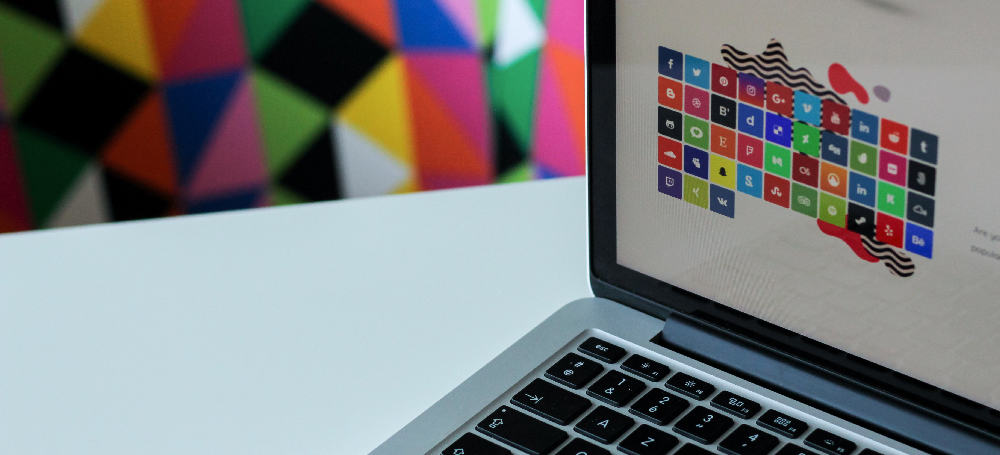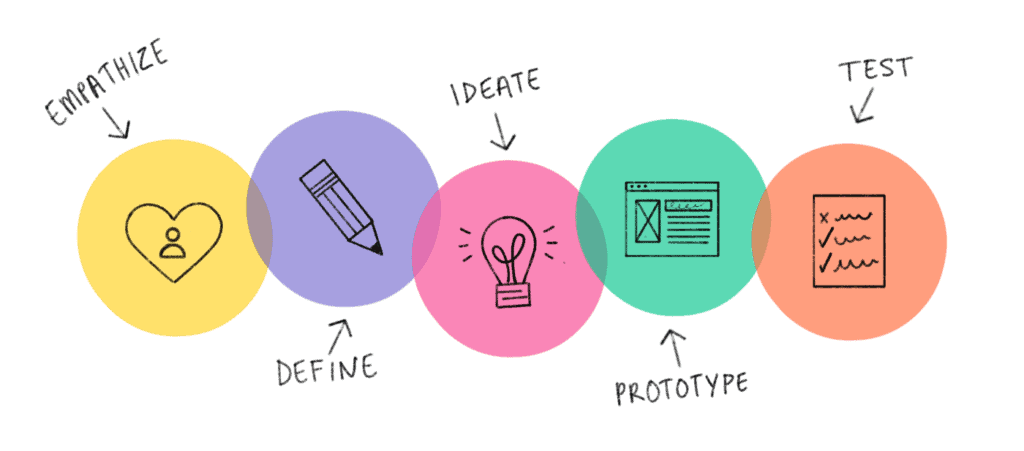

5 Phases Involved in the User Design Thinking Approach
User Design thinking is a process that enables organizations to develop innovative solutions to challenging problems.
It is an iterative approach that focuses on empathy, experimentation, and collaboration among teams, and it is becoming increasingly popular in the business world. The five stages in the design thinking process—Empathize, Define, Ideate, Prototype, and Test—can help organizations create meaningful solutions that meet users’ needs. In this blog post, we will explore and discuss each of the five stages in the design thinking process in greater detail. We will explain how each stage of the process can help an organization develop innovative solutions, and provide examples of how organizations have applied the design thinking process to gain competitive advantages. We will also offer suggestions on how to implement design thinking within an organization. By the end of this blog post, you should have a better understanding of the design thinking process and how it can be effectively used in the workplace.
1. Empathize – Understanding the user and their needs
The first stage of the design thinking process is empathizing. This means understanding the user and their needs, which involves getting to know the user and what they are looking to achieve. It can involve research, interviews, surveys, and observation. A successful empathy phase will provide designers with insights into the user’s needs, wants, and motivations that can be used to create more effective and targeted solutions. During this phase, designers should also be looking for areas of improvement and for opportunities for innovation.
2. Define – Identifying the problem you are trying to solve
The second stage of the design thinking process is defining. At this stage, it is important to identify the problem you are trying to solve and the objectives you want to achieve. This involves researching the problem, understanding the needs of the users, and exploring the context in which the problem exists. By defining the problem, you can help to ensure that the design you create is relevant, effective, and appropriate for the situation. The information gathered in this stage will help guide the design process in the following stages.
3. Ideate – Generating ideas to solve the problem
After empathizing with the user, the third stage of the Design Thinking Process is to begin ideating possible solutions. This is the part where you generate ideas that could potentially solve the problem. Brainstorming and mind-mapping are great techniques for this. The key is to focus on quantity rather than quality; the more ideas you generate, the better. Once you have a good list of ideas, then you can start to narrow down to the best ones. It’s also a good idea to start with wild and crazy ideas and get progressively more practical. You never know what might spark an amazing solution.
4. Prototype – Creating a prototype to test the idea
The fourth stage in the design thinking process is creating a prototype. This stage involves taking the idea and putting it into tangible form. This can be as simple as a sketch or as complex as a functioning app. Whatever the form, the prototype should be tested with potential users to understand how they interact with the product. This phase is important because it allows you to make improvements to the design based on user feedback before the product is fully developed. This can save a lot of time and resources in the long run.
5. Test – Testing the prototype with users
The fifth stage in the design thinking process is testing the prototype with users. This is a crucial step, as it allows you to get feedback from the people who will actually be using your product. Testing with users can be done in a variety of ways, including usability testing, focus groups, and interviews. During this stage, it is important to be open to feedback and to be willing to iterate and improve the prototype based on the feedback. A successful prototype is the result of an exhaustive and iterative process of user testing.

6. Iterate – Refining the design based on user feedback
The sixth stage in the User Design Thinking Process is Iterate, which involves refining the design based on user feedback. During this stage, designers assess the feedback they’ve gathered throughout the process in order to improve their product. This could include making changes to the user interface, adding new features, or making adjustments to the existing design. Iteration is an ongoing process that ensures the end product is something that users find engaging, intuitive, and useful. Through this process, designers can continually refine the design until they’ve achieved the desired results.
7. Implement – Putting the design into practice
The seventh and final stage in the user design thinking process is implementation. Here, the design is put into practice. This involves bringing together all the elements of the concept, including the product design, user experience, and marketing plans. The end goal is to create an innovative product or service that meets the needs of the target market. At this stage, the project team is responsible for ensuring that the product or service is complete, user-friendly, and ready to be released to the public. This stage of the process is also a great time to refine the design and make any necessary changes before launching.
8. Evaluate – Analyzing the results to measure success
The eight and final stage in the user design Thinking Process is to Evaluate – Analyze the results to measure success. This process involves looking back over the project to identify successes and failures, to determine what worked, what didn’t work, and what could have been improved. After careful review, any necessary changes can be made to ensure better results in the future. This stage is crucial for any Design Thinking project, as it is an opportunity for the team to reflect on their processes and evaluate the success of the outcome.
In conclusion, the design thinking process is an effective way to approach any problem or project. By taking the time to understand the situation, brainstorm creative solutions, and test the best solutions, you can ensure your designs are user-friendly, effective, and successful. Using the five stages of design thinking can help you create innovative solutions that make a real impact.
